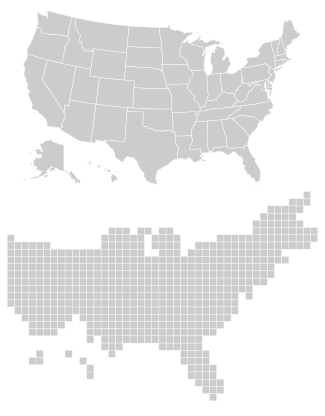National Popular Vote Interstate Compact
| Drafted | February 2006 |
|---|---|
| Effective | Not in effect |
| Condition | Adoption by several of the states and including the District of Columbia whose collective electoral vote total represents an absolute majority of votes (at least 270) in the Electoral College. Note: The agreement would be in effect only among the assenting constituent political entities. |
| Signatories | |
|
|
|
Each square in the lower cartogram
represents one electoral vote.
The National Popular Vote Interstate Compact (NPVIC) is an agreement among a group of U.S. states and the District of Columbia to award all their respective electoral votes to whichever presidential candidate wins the overall popular vote in the 50 states and the District of Columbia. The compact is designed to ensure that the candidate who wins the most popular votes is elected president, and it will come into effect only when it will guarantee that outcome. As of January 2017[update], it has been adopted by ten states and the District of Columbia. Together, they have 165 electoral votes, which is 30.7% of the total Electoral College and 61.1% of the votes needed to give the compact legal force.
Proposed in the form of an interstate compact, the agreement would go into effect among the participating states in the compact only after they collectively represent an absolute majority of votes (currently at least 270) in the Electoral College. In the next presidential election after adoption by the requisite number of states, the participating states would award all of their electoral votes to presidential electors associated with the candidate who wins the overall popular vote in the 50 states and the District of Columbia. As a result, the winner of the national popular vote would always win the presidency by always securing a majority of votes in the Electoral College. Until the compact's conditions are met, all states award electoral votes in their current manner.
The compact would modify the way participating states implement Article II, Section 1, Clause 2 of the U.S. Constitution, which requires each state legislature to define a method to appoint its electors to vote in the Electoral College. The Constitution does not mandate any particular legislative scheme for selecting electors, and instead vests state legislatures with the exclusive power to choose how to allocate its own electors. States have chosen various methods of allocation over the years, with regular changes in the nation's early decades. Today, all but two states (Maine and Nebraska) award all their electoral votes to the candidate with the most votes statewide.
...
Wikipedia




























